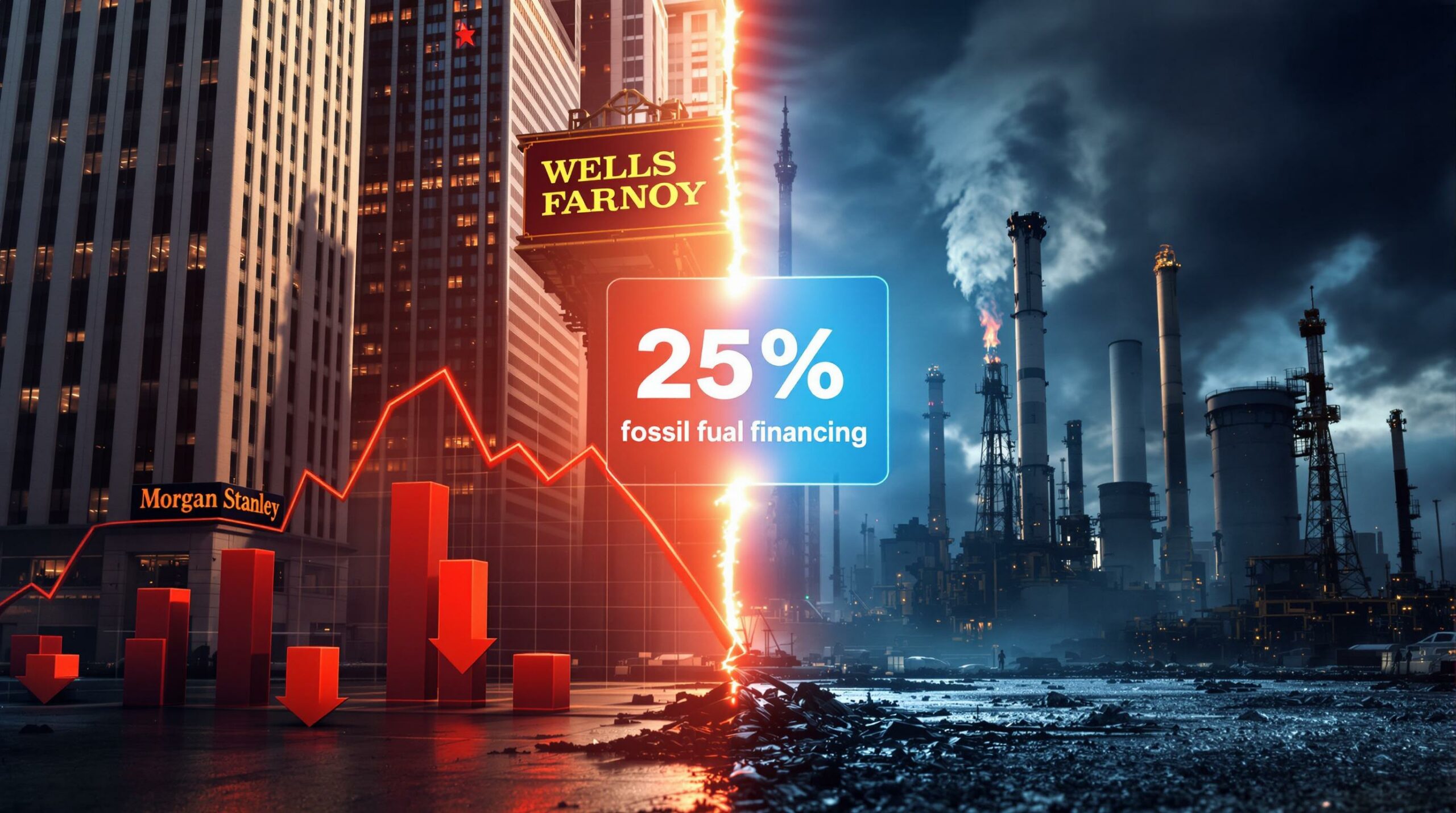The Global Race for Rare Earth Independence: How Allied Nations Are Breaking China's Monopoly
Why Are Governments Investing in Rare Earth Processing?
The Strategic Vulnerability in Global Supply Chains
Western nations face a critical strategic vulnerability with approximately 80% of global rare earth supply chains controlled by China. This dominance extends beyond mining to include the crucial separation and processing stages that transform raw materials into usable components for defense systems and green technologies.
Recent export restrictions on heavy rare earths like dysprosium and terbium have triggered urgent responses from allied governments seeking to establish supply chain resilience. These restrictions represent a tangible manifestation of how geopolitical tensions can directly impact technological development and national security preparedness.
Mark Chalmers, CEO of Energy Fuels, succinctly explained the problem: "When there's a shortage of these products and you've got a country like China imposing restrictions on those products and those are required for the highest efficiency electric motor. You need those materials."
The Shift from Cost Efficiency to Strategic Security
The rare earth market is undergoing a fundamental transformation from purely cost-driven decision-making to policy-backed strategic imperatives. Allied nations are prioritizing supply security over marginal cost advantages, creating a new economic framework for rare earth development.
This shift represents a departure from traditional market dynamics toward a model where national security considerations drive investment decisions. The United States, European Union, Australia, and Japan are co-investing in rare earth processing hubs designed to establish supply chain redundancy that may appear economically inefficient in traditional market analyses but creates vital strategic resilience.
Industry Insight: The rare earth market transformation is not simply a reaction to short-term trade tensions, but represents a structural realignment of how critical minerals are valued in national security frameworks.
What Financial Mechanisms Are Governments Using?
Price Floors and Revenue Guarantees
The U.S. Department of Defense established a $110 per kilogram price floor for neodymium-praseodymium in July 2025, fundamentally altering the economic calculations for rare earth projects. This policy intervention eliminates downside risk for producers operating within allied frameworks and creates investment certainty previously absent from the sector.
Projects that were economically marginal under volatile spot pricing now demonstrate robust financial returns with government-backed pricing mechanisms. This price floor mechanism serves several functions:
- Risk mitigation for private capital investors
- Production incentives for domestic suppliers
- Signaling function to international markets
- Baseline economics for project development
The price floor strategy represents a significant departure from traditional laissez-faire approaches to mineral development in Western economies, recognizing the strategic imperative of secure supply chains.
Direct Investment and Co-Funding Models
Allied governments are deploying substantial capital through direct investments and loan guarantees to accelerate rare earth processing development. Australia and the United States have committed $840 million to support Arafura Resources' rare earth processing initiatives, demonstrating willingness to directly fund strategic mineral development.
These financing structures provide access to capital that traditional project finance mechanisms might not support, particularly for projects with strategic rather than purely commercial rationales. This approach combines government resources with private sector execution capabilities, creating hybrid development models that accelerate project timelines while maintaining commercial discipline.
Government partnerships serve as leverage in project finance discussions, providing implicit guarantees that reduce perceived political and regulatory risks. This support structure enables projects to access capital markets at more favorable terms while maintaining operational independence.
Where Is the Processing Bottleneck in Rare Earth Supply Chains?
The Critical Midstream Gap
The most significant vulnerability in rare earth supply chains lies not in mining operations but in separation and processing capacity. While mining occurs across multiple jurisdictions, the complex chemical processing required to separate rare earth elements into commercially viable products remains concentrated in China.
This processing gap creates a chokepoint in global supply chains with implications for defense manufacturers, electric vehicle producers, and renewable energy developers. The technical expertise required to operate separation facilities compounds this challenge, as the knowledge base has been concentrated in Chinese operations for decades.
Mark Chalmers highlighted the practical reality of actual production versus aspirational goals: "We are doing more than others right now. You can see the neodymium-praseodymium, the bags of separated oxides, and the bags of monazite. You can see it and you can track it right on through a plant."
Technical Complexity and Environmental Challenges
Rare earth separation facilities face significant barriers to entry due to technical complexity and environmental permitting requirements. The chemical processes involved in separating individual rare earth elements from mixed concentrates require specialized expertise and substantial infrastructure investment.
Environmental considerations further complicate facility development, creating lengthy permitting challenges overview that advantage existing operations with established regulatory frameworks. These challenges include:
- Radioactive byproduct management from thorium and uranium content in many rare earth deposits
- Chemical waste handling from solvent extraction processes
- Water usage and treatment requirements
- Air quality considerations from processing facilities
- Transportation and storage of hazardous materials
Companies able to navigate these technical and regulatory challenges gain significant competitive advantages in establishing Western processing capacity.
Who Are the Key Players in Western Rare Earth Processing?
Established Infrastructure Providers
Companies with existing processing infrastructure demonstrate significant advantages in the race to establish Western rare earth supply chains. Energy Fuels operates the White Mesa Mill, the only licensed rare earth processor in the United States, providing unique positioning in the domestic market.
This established facility processes feedstock from multiple international sources, reducing single-source dependency while maintaining operational flexibility. The capital-intensive nature of processing infrastructure creates natural barriers to entry that benefit early movers in the sector.
Market Insight: The value of established processing infrastructure extends beyond the physical assets to include operational expertise, regulatory relationships, and proven technical capabilities that new entrants must develop over extended timeframes.
Diversified Feedstock Strategies
Leading processors are developing diversified feedstock portfolios to ensure operational resilience and product differentiation. Sources include the Donald Project in Australia, Bahia operations in Brazil, and the Toliara project in Madagascar.
Companies with higher heavy rare earth content, particularly dysprosium and terbium, command premium positioning due to critical applications in high-performance permanent magnets used in electric vehicle motors and wind turbine generators. This differentiation in feedstock composition creates natural market segmentation:
| Feedstock Type | Key Elements | Strategic Applications | Market Positioning |
|---|---|---|---|
| Heavy Rare Earth Rich | Dysprosium, Terbium | Defense systems, High-temp magnets | Premium/Strategic |
| Light Rare Earth Dominant | Neodymium, Praseodymium | Standard EV motors, Consumer electronics | Commercial/Volume |
| Balanced Distribution | Mix of light and heavy REEs | Diversified applications | Flexibility/Resilience |
Feedstock diversity provides both operational flexibility and market differentiation that translate into competitive advantages in securing offtake agreements.
How Does Permitting Affect Project Development Timelines?
Brownfield Versus Greenfield Development Advantages
Permitting timelines create significant differentiation between brownfield and greenfield development approaches. Established facilities with existing environmental permits and operational history demonstrate substantial advantages in project development schedules.
The value of controlling processing infrastructure extends beyond operational control to include regulatory certainty and community stakeholder relationships. This timeline advantage can be measured in years rather than months, creating first-mover benefits that compound over project lifespans.
- Brownfield expansions: 12-18 months typical permitting timeline
- Greenfield developments: 3-7+ years typical permitting timeline
- Hybrid approaches: 2-4 years with existing relationships
Energy Fuels leverages sunk cost advantages from its existing mineral sands operations, utilizing established infrastructure and operational expertise to accelerate development timelines for rare earth processing capacity.
Leveraging Existing Stakeholder Relationships
Companies with established community relationships and environmental compliance histories demonstrate lower regulatory risk profiles. These relationships provide operational certainty and community support that newer projects must develop over extended timeframes.
Stakeholder engagement advantages compound over time, creating competitive moats that competitors struggle to replicate quickly. This factor becomes particularly significant in jurisdictions with robust environmental protection frameworks and indigenous community consultation requirements.
The White Mesa Mill operates as an environmentally licensed, long-standing asset with established stakeholder relationships, including collaborative agreements with the Navajo Nation. These relationships provide a foundation for expansion initiatives that would be challenging to replicate in greenfield contexts.
What Investment Metrics Matter in the New Rare Earth Economy?
Strategic Valuation Models Replace Spot Price Dependence
Investment evaluation frameworks are evolving from spot price sensitivity to strategic positioning metrics. Projects evaluated under government funding for allied rare earth processing initiatives accelerate to reduce China dependence through various support mechanisms that demonstrate different risk profiles compared to those dependent on volatile spot markets.
This differentiation becomes particularly pronounced when comparing cost curves between different feedstock types and processing methodologies. Traditional metrics like internal rate of return and net present value calculations must be adjusted to account for price floors and strategic premiums, creating distinct valuation frameworks for rare earth assets.
Key financial metrics in the emerging rare earth economy include:
- Downside protection from government price floors
- Strategic premium valuation for critical elements like dysprosium and terbium
- Vertical integration value across supply chain stages
- Processing capacity scarcity premium
- Regulatory certainty advantages for permitted facilities
These metrics incorporate both traditional financial considerations and strategic positioning factors that reflect the hybrid commercial-strategic nature of rare earth assets.
Vertical Integration Captures Supply Chain Value
Margin expansion through vertical integration becomes increasingly attractive as processing capacity constraints limit supply response to demand growth. Companies controlling both feedstock and processing assets capture value across multiple stages of the supply chain while reducing counterparty risk.
This integrated approach provides operational flexibility and enhanced pricing power in constrained markets. The ability to monetize both upstream and midstream activities creates additional operational leverage that standalone mining or processing operations cannot achieve.
Investment Insight: Companies positioned at key supply chain nodes with multiple monetization pathways demonstrate enhanced resilience against market volatility and improved capital return metrics.
How Are ESG Considerations Shaping Rare Earth Development?
Supply Chain Transparency and Traceability
Environmental, social, and governance (ESG) considerations are increasingly incorporated as screening factors for institutional capital allocation. Blockchain traceability adoption across manufacturer procurement channels reflects growing emphasis on supply chain transparency and ethical sourcing.
These trends advantage producers with established ESG frameworks and transparent supply chain documentation. Original equipment manufacturers (OEMs) in automotive and electronics sectors are implementing chain-of-custody requirements that create compliance advantages for producers with transparent operations and documented sustainability practices.
The adoption of blockchain-based traceability solutions provides:
- Verified origin certification for critical minerals
- Process verification for environmental compliance
- Documented labor practices throughout the supply chain
- Carbon footprint accounting for scope 3 emissions reporting
- Conflict minerals compliance documentation
These traceability mechanisms create preferential market access for producers with transparent and sustainable operations.
Sustainable Production Advantages
Companies with environmentally licensed, long-standing assets and established stakeholder relationships demonstrate competitive advantages in attracting institutional investment. These relationships provide operational certainty and community support while reducing regulatory risks.
First-movers in sustainable rare earth production capture reputational advantages that translate into preferential offtake agreements and financing terms. The growing emphasis on ESG metrics in institutional investment allocation decisions creates natural advantages for producers with established sustainability credentials.
Western processors demonstrating sustainable practices can command premium pricing from manufacturers seeking to document ethical sourcing for consumer-facing products and government procurement requirements.
What Are the Key Investment Considerations for Rare Earth Assets?
Policy Alignment and Strategic Positioning
Projects aligned with national security priorities and policy support frameworks demonstrate enhanced investment potential. The classification of rare earths as strategic metals links investment returns to policy priorities rather than commodity price volatility, creating more stable long-term value propositions.
Companies positioned at the intersection of policy support, operational capability, and financial strength capture disproportionate value from market restructuring. This alignment creates multiple pathways to monetization that extend beyond traditional commodity market dynamics.
Critical alignment factors include:
- Jurisdiction selection – operations in allied nations
- Product focus – emphasis on critical elements (Dy, Tb, Nd, Pr)
- Supply chain integration – connected to defense materials strategy
- Technical capabilities – proven separation expertise
- Financial resilience – ability to withstand market volatility
Projects demonstrating alignment across these dimensions attract both policy support and institutional investment, creating virtuous cycles of capability development.
Processing Infrastructure Premium
Midstream processing capacity commands strategic premium valuations over mining-only assets in the evolving rare earth market. Non-Chinese separation facilities represent critical infrastructure in supply chain independence strategies, with established operations demonstrating significant barriers to entry.
Companies with permitted processing facilities capture first-mover advantages in securing feedstock supply agreements and downstream offtake contracts. This positioning creates durable competitive advantages that translate into premium valuations compared to mining-only operations dependent on third-party processing.
The market structure evolution favors integrated operations with both mining and processing capabilities, particularly those with established operational track records and regulatory certainty.
How Are Heavy Rare Earths Differentiated in Strategic Planning?
Critical Applications in Defense and Energy Transition
Heavy rare earths, particularly dysprosium and terbium, occupy privileged positions in strategic planning due to their critical applications in defense systems and energy transition technologies. These elements enable high-temperature performance in permanent magnets used in electric vehicle motors, wind turbines, and military applications.
Supply constraints for heavy rare earths are more acute than for light rare earths, creating enhanced pricing power for producers with heavy rare earth exposure. The technical necessity of these elements in high-performance applications creates inelastic demand that supports premium pricing structures.
Key applications for heavy rare earths include:
| Element | Critical Applications | Supply Constraints | Strategic Importance |
|---|---|---|---|
| Dysprosium | EV traction motors, Wind turbines, Military systems | Severe | Very High |
| Terbium | High-efficiency lighting, Sonar systems, Precision-guided munitions | Severe | Very High |
| Holmium | Solid-state lasers, Nuclear control rods, Magnetic cooling | Moderate | High |
| Erbium | Fiber optic amplifiers, Nuclear applications, Metallurgical additives | Moderate | Moderate |
| Ytterbium | Radiation monitoring, Stress gauges, Solar cells | Moderate | Moderate |
This differentiation in strategic importance creates natural market segmentation and premium pricing opportunities for companies with heavy rare earth exposure.
Export Control Implications
Chinese export controls on heavy rare earths have accelerated policy responses and investment in alternative supply sources. These restrictions highlight the vulnerability of defense and clean energy supply chains to geopolitical disruption, as detailed in recent rare earth reserves analysis.
Companies with significant heavy rare earth content in their resource base demonstrate enhanced strategic positioning in government procurement frameworks and investment prioritization. The ability to provide secure supply of these critical elements translates into premium offtake agreements and enhanced policy support.
Market Insight: The strategic importance of heavy rare earths in defense applications creates unique valuation considerations that transcend traditional commodity market dynamics, with national security imperatives supporting premium pricing structures.
What Financial Structures Support Western Rare Earth Development?
Self-Funding Development Models
Companies with existing cash flow generation demonstrate advantages in funding rare earth processing expansion without dilutive financing. Energy Fuels maintains $210 million in liquidity with no debt obligations as of March 2025, supporting commercial production while funding expansion initiatives.
This financial positioning contrasts with early-stage peers dependent on speculative pricing assumptions and external financing for project development. The ability to self-fund creates both financial flexibility and enhanced returns for shareholders through reduced dilution risk.
The self-funding model provides several competitive advantages:
- Reduced execution risk from financing contingencies
- Enhanced shareholder returns through minimized dilution
- Operational control without external financing constraints
- Development timeline certainty independent of capital markets
- Strategic flexibility to pursue opportunistic growth
These advantages compound over time, creating sustainable competitive differentiation for established producers with strong balance sheets.
Government Partnership Leverage
Government partnerships serve as leverage in project finance discussions, providing implicit guarantees that reduce perceived political and regulatory risks. As explained in a recent CSIS analysis, this support structure enables projects to access capital markets at more favorable terms while maintaining operational independence.
The combination of government backing and private sector execution creates hybrid development models that accelerate project timelines while maintaining commercial discipline. This approach balances strategic imperatives with financial return requirements, creating sustainable development frameworks.
Projects with government co-funding demonstrate enhanced bankability with commercial lenders and reduced risk premiums on debt financing. This advantage translates into improved project economics and competitive positioning relative to standalone developments.
What Does the Future Rare Earth Market Structure Look Like?
Multilateral Supply Networks Replace China-Centric Model
The evolution from China-centric supply chains toward multilateral, strategic networks represents a fundamental restructuring of rare earth markets. This transition creates investment opportunities for companies with early exposure to midstream processing infrastructure and proven feedstock diversity.
The emerging market structure prioritizes supply security and strategic alignment over marginal cost advantages, creating durable competitive positions for Western producers. This restructuring represents a generational investment opportunity as capital flows shift toward strategic positioning rather than pure cost considerations.
Key characteristics of the emerging market structure include:
- Redundant supply networks across allied jurisdictions
- Strategic stockpiling of critical elements
- Government co-investment in processing infrastructure
- Policy-backed price supports for domestic production
- Preferential procurement from allied supply chains
These structural changes create sustainable demand for non-Chinese
Looking to Stay Ahead in Resource Investment Opportunities?
Discover significant mineral finds before the market with Discovery Alert's proprietary Discovery IQ model, delivering real-time ASX announcements straight to your inbox. Visit our discoveries page to see how early detection of major mineral discoveries can transform your investment portfolio.




